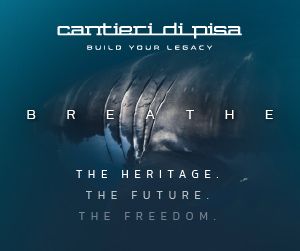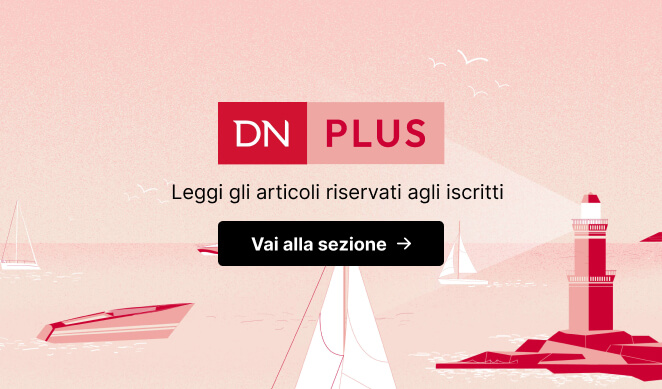Architect Antonio Luxardo talks to DN: “The emotional factor is always the most important in yachting”
Co-founder of Optima Design, Antonio Luxardo, talks to us about changing professions and changes to yachting
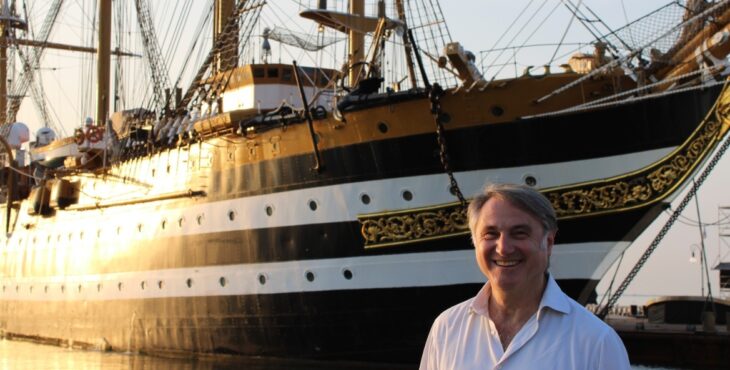
Co-founder of Optima Design, Antonio Luxardo, talks to us about changing professions and changes to yachting

Articolo riservato agli utenti registrati
Sali a bordo della community DN Plus.
Per te, un'area riservata con: approfondimenti esclusivi, i tuoi articoli preferiti, contenuti personalizzati e altri vantaggi speciali
Accedi RegistratiA sailing enthusiast with many years’ experience in design, and not just boating design - for nearly twenty years in the early 2000s, he travelled back and forth to China working on new urban and marine architecture - architect Antonio Luxardo, co-founder along with Michele Zignego of Optima Design, has partnered with some of the most important Italian shipyards. Today, he has been nominated chief designer for Cantieri di Pisa, and is redesigning their three traditional series - Polaris, Saturno and Akhir (the boat that has been on the market the longest) - he is also designing the new 50 and 70-metre steel Amer superyachts, and the fibreglass 96 Sanremo, F106, and F126.
During our interview, he spoke to Daily Nautica about jobs and manufacturing that are constantly changing, looking to the future and innovation, but with deep roots in yachting tradition.
Have been passionate about yachting for a long time?
The first drawing I made in primary school was of a sail boat. After that, any time we had to write in class about what we wanted to be when we grew up, I always said I wanted to be a yacht designer. I became a sailor and had some boats, the ones that I designed, and a skiff, which I love very much. I started working using a pencil, a drafting machine, heliographic copies of hand drawings on transparency, designing traditional wooden vessels for different shipyards, including Diano. Then of course everything changes as technology developed.
How has boating changed over the past decades?
There has been a distinctive change over the past thirty years: from small shipyards to large groups, from artisan to artisanal industrialisation, from producers of components to integrating products, from working by hand to machine assistance. And then there is technology...all aspects that have led to an accelerated transformation: products have changed quickly, new market needs have emerged and, when designers are good, they create products that reawaken a desire in clients to explore exciting new adventures. Because it is the emotional factor that is the driving force for everyone, starting with owners through to those involved in building the yachts. Skills have changed, but new ones have also emerged. The interaction between the different parties who work together in building a yacht is completely different: design tools have evolved, even though, in my opinion, we still don’t have software that is truly dedicated to boating for integrated design. But I am certain it will come.
What does it mean then now to design for pleasure yachting?
Nowadays, you need more and more skills and sensitivity. We need more culture in order to work with both new clients, who are younger, thanks to financial freedom created by digital enterprise, and those who come from a variety of geographical areas, with different cultures. What’s more, thirty years ago, work was done by only one person, or a small group of people, now, however, it requires multiple professions, so an expanded group of experts in different fields, with teams made up of a dozen people or more. As a consequence, we need to be even more skilled, not just in the creative phase, but also in managing the development of that idea.
What are the most frequent requests from shipyards and owners?
Shipyards are working more internationally now, so they work with different cultures and pinpoint the right product for each market.
[caption id="attachment_172030" align="aligncenter" width="730"]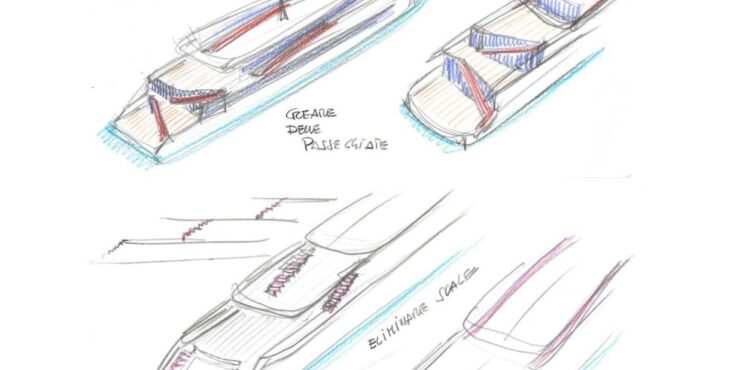
Innovation in style and function is needed in regards to the interaction of the various areas on board, and as a consequence, a new way of enjoying the yacht is created. The desired connection with the natural landscape, connecting the interior and exterior also needs to innovation. In addition, there is demand for flexibility and, at the same time, ease of use, even from a technical point of view.
And what does Antonio Luxardo consider to be essential in yacht design?
Boating qualities, safety and management are, in my opinion, essential, but they need to necessarily be integrated into style and comfort.
What is Optima Design’s distinctive trait in each project?
I would say our continuous work in all phases of a project, from the initial idea to delivery of the finished product, through the entire design, manufacture and launch, working with suppliers, buyer assistants, interfacing with registers, flags and everything else that need doing to ensure that the finished product is of the best quality possible, from the aesthetic, functional, technical and financial point of view. This includes to the work needed to make prototypes, which has very little time to be completed between the sale and beginning of construction, then delivery. This requires enormous effort: teamwork is important, as is a good relationship between all parties involved. The consistent exchange of opinions and information is the real challenge of the future and in this, Optima Design aims to stand out.
Is it a cooperative job with the client shipyard or does it happen sometimes that a brand is chosen after the design?
I would say that in my case, both of these can happen. Often it happens that we work cooperatively together with the client shipyard, in that case the design is created by various people which is also stimulating. The challenge of any professional is to “hide” in the brand, to make sure that each new vessel created showcases the history and distinctive traits of the shipyard.
[caption id="attachment_172033" align="aligncenter" width="730"]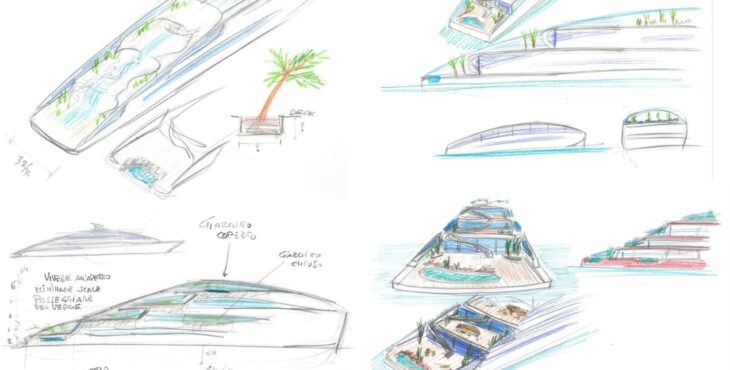
In other cases, instead, an idea is developed, and then we see how it aligns with a certain brand and/or shipyard, especially when it is innovative in both style and function. In that case, however, we need to be careful about how we introduce the idea to the potential shipyard, because innovation often creates fear, inasmuch as it can be criticised, or, not be assimilated by the market initially. Even the best ideas, without fertile terrain, cannot grow: it might take years for them to take root, and it may even be through other channels.
What do you think of research in the field of green propulsion and what do you think are the steps to be taken to align boats with the ecological standards required of the automotive industry?
I believe that zero emissions needs to be looked at more broadly, from design to the manufacture of a product, including all necessary component (which also need to be green), through to the end of a yacht’s life cycle. The life of a yacht is much longer than that of a car, for example. Even the number built is far less, so there are many different things to consider. And, they are of a different origin compared to other industries.
In regards to propulsion, I would say that at the moment we should be trying to create clean energy, even through the movement of the boat itself, especially when looking at small vessels. Another important aspect is improving the propulsion system, transforming technology from other industries, as boating, ultimately, does not have enough manufacturing mass to justify direct intervention. Then it is also important to use energy efficiently: the energy efficiency of a vessel is the first step, maybe the easiest, and also the one that can be resolved more easily.
Another thing that I would like is sharing projects across multiple shipyards, to study and experiment new technology to create a common property, so as to develop or outline, the results as each research participant believes is best. In this way, with reduced investments, we could have technology and innovation. Shaing is important for all of us to grow, also because there is only a limited number of industry players.
How can a designer work on creating a more sustainable yacht?
Informed design is the first step towards sustainability, because that conditions the entire production process which leads to building a yacht, and it will determine whether or not it is sustainable. It must be a collective effort: shipyards, designers, crew and service suppliers. It is a group effort, where everyone focuses on the result, putting themselves to the side in order to become one with the process. The designer can design form and function with less heat dispersion and less heat radiation inside, using fewer heat conducting materials and using them in a new way. Then, obviously, there is hull efficiency, by reducing weight and improving lightness; this is something a designer can take on.
Do you believe that artificial intelligence has, or could have, a determining role in yacht design?
It is being incorporated by those who are not yet professionally involved. Personally, I think it is a great opportunity, that, however, needs to be used wisely. It can help in project and process management, reducing information transfer times, or to write documents needing to be shared faster, avoiding mistakes or wasted energy, A consistent exchange of opinions and information is, in my opinion, the real challenge of the future, so I believe AI will be used for many things. It can also help people learn faster, and therefore make the design market more competitive, as well as used for market research or new trends. It could make it easier to create a transversal exchange of information, technology and ideas/thoughts from other industries or crafts, to help develop new products. From the client’s point of view, it could lead to more pondered decisions, as it quickly makes information available or even observations that once took days or weeks. However, a design needs to have a soul, and this can only happen when it is created by a human.
What advice would you give to a young person wanting to follow your career?
Work with passion and sensitivity and be patient. It is also important to know how to work as part of a team: working calmly together leads to a state of mind that helps with expression and reach objectives, which leads to great satisfaction.
Topics: Daily Nautica



